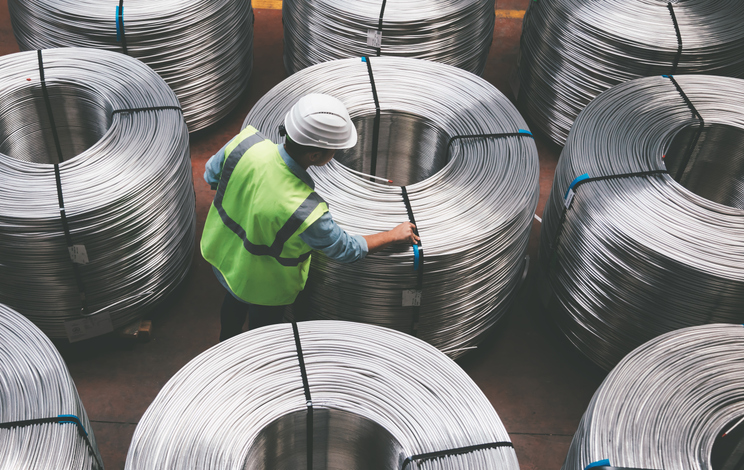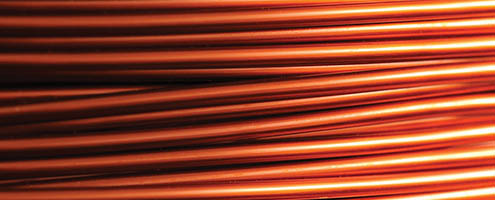Measurement & Temperature Conversion Tables
The guides below provide a detailed temperature conversion table and explanations of how to easily convert between Fahrenheit and Celsius, along with other unit conversions for length, area, volume, and mass.
Importance of Temperature Conversion in Wiring
Temperature conversion is crucial for the performance and safety of cables and wiring. Different environments require cables that can operate within specific temperature ranges, and knowing the temperature in both Celsius and Fahrenheit is important for making decisions during installation.
When dealing with international standards or manufacturers, temperature ratings may be provided in either Celsius or Fahrenheit, and it's important to convert these values correctly to avoid confusion.
Misinterpreting the temperature limits of a cable could lead to overheating, insulation breakdown, or even fire hazards. Understanding and converting temperature ratings ensures you comply with safety standards and regulations, ensuring a reliable wiring system.
Importance of Measurement Conversions in Cable Lengths
Precise measurements are important to ensure that wire and cable installations are safe, efficient, and cost-effective. Different countries and industries use different measurement systems, such as the imperial system (feet, inches) and the metric system (meters, millimeters).
For instance, an installer may need to convert the length of a cable from feet to meters when sourcing materials from global manufacturers. A slight miscalculation in these conversions could result in ordering too much or too little cable, leading to project delays and unnecessary expenses.
Similarly, converting from feet to meters or inches to millimeters can impact installation processes, especially in tight spaces or projects requiring precise cable routing. For example, if a cable’s insulation thickness or overall diameter is incorrectly converted, it may not fit into designated enclosures.
Proper conversions also ensure that cable runs meet the required specifications for voltage drop or resistance over a given length, which are important for maintaining performance and safety.
Instructions:
- Read known temperature in center of column.
- Corresponding temperature in degrees Fahrenheit will be found in the column to the right.
- Corresponding temperature in degrees Celcius will be found in the column to the left.
Temperature Conversion Table
| -5 to -100 | 0 to 100 | 100 to 1,000 | |||||||||
|---|---|---|---|---|---|---|---|---|---|---|---|
| C | F | C | F | C | F | C | F | ||||
| -73.3 | -100 | -148 | -17.8 | 0 | 32.0 | 10.0 | 50 | 122.0 | 38 | 100 | 212 |
| -70.5 | -95 | -139 | -17.2 | 1 | 33.8 | 10.6 | 51 | 123.8 | 43 | 110 | 230 |
| -67.8 | -90 | -130 | -16.7 | 2 | 35.6 | 11.1 | 52 | 125.6 | 49 | 120 | 248 |
| -65.0 | -85 | -121 | -16.1 | 3 | 37.4 | 11.7 | 53 | 127.4 | 54 | 130 | 266 |
| -62.2 | -80 | -112 | -15.6 | 4 | 39.2 | 12.2 | 54 | 129.2 | 60 | 140 | 284 |
| -59.5 | -75 | -103 | -15.0 | 5 | 41.0 | 12.8 | 55 | 131.0 | 66 | 150 | 302 |
| -56.7 | -70 | -94 | -14.4 | 6 | 42.8 | 13.3 | 56 | 132.8 | 71 | 160 | 320 |
| -53.9 | -65 | -85 | -13.9 | 7 | 44.6 | 13.9 | 57 | 134.6 | 77 | 170 | 338 |
| -51.1 | -60 | -76 | -13.3 | 8 | 46.4 | 14.4 | 58 | 136.4 | 82 | 180 | 356 |
| -48.3 | -55 | -67 | -12.8 | 9 | 48.2 | 15.0 | 59 | 138.2 | 88 | 190 | 374 |
| -45.6 | -50 | -58 | -12.2 | 10 | 50.0 | 15.6 | 60 | 140.0 | 93 | 200 | 392 |
| -42.8 | -45 | -49 | -11.7 | 11 | 51.8 | 16.1 | 61 | 141.8 | 99 | 210 | 410 |
| -40.0 | -40 | -40 | -11.1 | 12 | 53.6 | 16.7 | 62 | 143.6 | 100 | 212 | 413 |
| -37.2 | -35 | -31 | -10.6 | 13 | 55.4 | 17.2 | 63 | 145.4 | 104 | 220 | 428 |
| -34.4 | -30 | -22 | -10.0 | 14 | 57.2 | 17.8 | 64 | 147.2 | 110 | 230 | 446 |
| -31.6 | -25 | -13 | -9.44 | 15 | 59.0 | 18.3 | 65 | 149.0 | 116 | 240 | 464 |
| -28.9 | -20 | -4 | -8.89 | 16 | 60.8 | 18.9 | 66 | 150.8 | 121 | 250 | 482 |
| -26.1 | -15 | 5 | -8.33 | 17 | 62.6 | 19.4 | 67 | 152.6 | 127 | 260 | 500 |
| -23.3 | -10 | 14 | -7.78 | 18 | 64.4 | 20.0 | 68 | 154.4 | 132 | 270 | 518 |
| -20.5 | -5 | 23 | -7.22 | 19 | 66.2 | 20.6 | 69 | 156.2 | 138 | 280 | 536 |
| -6.67 | 20 | 68.0 | 21.1 | 70 | 158.0 | 143 | 290 | 554 | |||
| -6.11 | 21 | 69.8 | 21.7 | 71 | 159.8 | 149 | 300 | 572 | |||
| -5.56 | 22 | 71.6 | 22.2 | 72 | 161.6 | 154 | 310 | 590 | |||
| -5.00 | 23 | 73.4 | 22.8 | 73 | 163.4 | 160 | 320 | 608 | |||
| -4.44 | 24 | 75.2 | 23.3 | 74 | 165.2 | 166 | 330 | 626 | |||
| -3.89 | 25 | 77.0 | 23.9 | 75 | 167.0 | 171 | 340 | 644 | |||
| -3.33 | 26 | 78.8 | 24.4 | 76 | 168.8 | 177 | 350 | 662 | |||
| -2.78 | 27 | 80.6 | 25.0 | 77 | 170.6 | 182 | 360 | 680 | |||
| -2.22 | 28 | 82.4 | 25.6 | 78 | 172.4 | 188 | 370 | 698 | |||
| -1.67 | 29 | 84.2 | 26.1 | 79 | 174.2 | 193 | 380 | 716 | |||
| -1.11 | 30 | 86.0 | 26.7 | 80 | 176.0 | 199 | 390 | 734 | |||
| -0.56 | 31 | 87.8 | 27.2 | 81 | 177.8 | 204 | 400 | 752 | |||
| 0 | 32 | 89.6 | 27.8 | 82 | 179.6 | 210 | 410 | 770 | |||
| 0.56 | 33 | 91.4 | 28.3 | 83 | 181.4 | 216 | 420 | 788 | |||
| 1.11 | 34 | 93.2 | 28.9 | 84 | 183.2 | 221 | 430 | 806 | |||
| 1.67 | 35 | 95.0 | 29.4 | 85 | 185.0 | 227 | 440 | 824 | |||
| 2.22 | 36 | 96.8 | 30.0 | 86 | 186.8 | 232 | 450 | 842 | |||
| 2.78 | 37 | 98.6 | 30.6 | 87 | 188.6 | 238 | 460 | 860 | |||
| 3.33 | 38 | 100.4 | 31.1 | 88 | 190.4 | 243 | 470 | 878 | |||
| 3.89 | 39 | 102.2 | 31.7 | 89 | 192.2 | 249 | 480 | 896 | |||
| 4.44 | 40 | 104.0 | 32.2 | 90 | 194.0 | 254 | 490 | 914 | |||
| 5.00 | 41 | 105.8 | 32.8 | 91 | 195.8 | 260 | 500 | 932 | |||
| 5.56 | 41 | 107.6 | 33.3 | 92 | 197.6 | 273 | 525 | 977 | |||
| 6.11 | 43 | 109.4 | 33.9 | 93 | 199.4 | 287 | 550 | 1,022 | |||
| 6.67 | 44 | 111.2 | 34.4 | 94 | 201.2 | 315 | 600 | 1,112 | |||
| 7.22 | 45 | 113.0 | 35.0 | 95 | 203.0 | 343 | 650 | 1,202 | |||
| 7.78 | 46 | 114.8 | 35.6 | 96 | 204.8 | 371 | 700 | 1,292 | |||
| 8.33 | 47 | 116.6 | 36.1 | 97 | 206.6 | 398 | 750 | 1,382 | |||
| 8.89 | 48 | 118.4 | 36.7 | 98 | 208.4 | 426 | 800 | 1,472 | |||
| 9.44 | 49 | 120.2 | 37.2 | 99 | 210.2 | 454 | 850 | 1,562 | |||
| 37.8 | 100 | 212.0 | 482 | 900 | 1,652 | ||||||
| 537 | 1,000 | 1,832 | |||||||||
Units of Measurement Conversion Equations
| Length | Area | Volume | Mass |
|---|---|---|---|
| Inch x 25.40 = Millimeters | Sq. Inch x 6.452 = Sq. Centimeter | Cu. Inch x 16.39 = Cu. Centimeter | Ounce x 28.35 = Gram |
| Millimeters x 0.03937 = Inches | Sq. Centimeter x 0.1550 = Sq. Inch | Cu. Centimeter x 0.06102 = Cu. Inch | Gram x 0.03527 = Ounce |
| Feet x 0.3048 = Meters | Sq. Foot x 0.0929 = Sq. Meter | Cu. Foot x 0.02832 = Cu. Meter | Pound x 0.4536 = Kilogram |
| Meters x 3.281 = Feet | Sq. Meter x 10.76 = Sq. Foot | Cu. Meter x 35.31 = Cu.Foot | Kilogram x 2.205 = Pound |
| Miles x 1.609 = Kilometers | Sq. Mile x 2.590 = Sq. Kilometer | Kilogram/km x 0.6214 = Pounds/kft | |
| Kilometers x 0.6214 = Miles | Sq. Kilometer x 0.3861 = Sq. Mile | Pounds/kft x 1.4881 = Kilogram/km | |
| Ohms/km x 0.3048 = Ohms/kft | Circular Mil x 0.7854 = Sq. Mil |
Temperature Conversion Formulas
Convert from Celsius to Fahrenheit
- °C = 5/9 (°F - 32)
Convert from Fahrenheit to Celsius
- °F= 9/5 (°C + 32)
Understanding the relationship between Celsius and Fahrenheit is crucial. By using the temperature conversion table or the provided formulas, you can quickly and easily convert between these two scales. Having quick access to unit conversions for length, area, volume, and mass enhances the ability for one to navigate different measurement systems with ease.
Related Resources

Application & Selection Guide for Standard Product
Read more on the typical applications for standard wire and cable products.Learn More
How to Choose the Right Wire or Cable
In selecting a wire or cable for an application, several factors should be considered. Learn More
Selecting a Conductor
Even in the design of a simple single insulated wire many factors must be considered, including physical properties of the conductorLearn More


